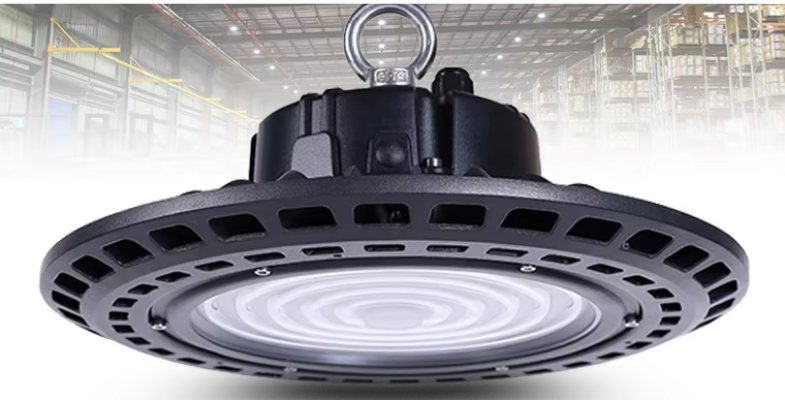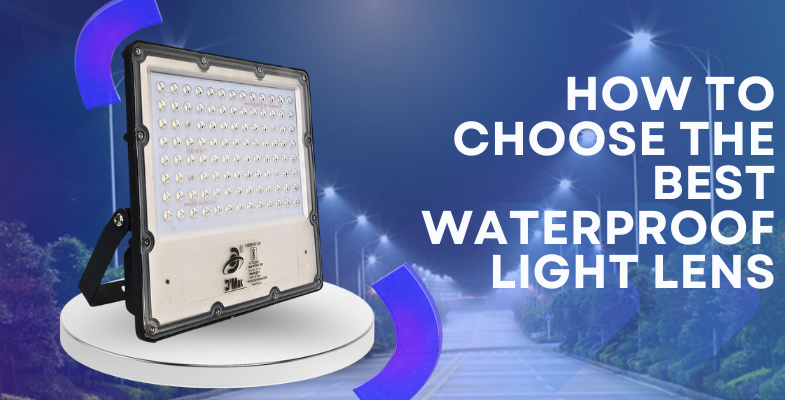Introduction:
Selecting the ideal waterproof light lens is a critical part of the selection of lighting solutions for outdoor, marine, and industrial applications for longevity and performance. Such lenses are specialized optical devices designed to serve at high levels for water-proofing during use and yet provide so much in light transmission for environments of extreme conditions. Whether you need waterproof LED floodlight lenses for stadium lighting, external applications, or even underwater applications, these factors will guide an informed selection.
Importance of a Waterproof Light Lens
Waterproof light lenses are meant to guard against environmental conditions that will damage LED fixtures. The strong caps of waterproof light lenses are strong enough that moisture, dust, or other extreme weather cannot penetrate them and interfere with their function. Primarily, this needs to be ensured in applications such as marine lighting, swimming pools, or installations outdoors, where exposure to water is continuous.
The assembly is weather-tight to prevent corrosion of internal components while the quality of light output remains stable with time. Beyond waterproofing, these lenses generally have other additional protective features such as UV resistance and high temperature stability.
Factors to Consider When Choosing a Waterproof Light Lens:
Let’s dive into the most important factors that are necessary to consider when choosing a Waterproof light lens-
· Material Quality
The material of construction has a lot of influence on lens performance and longevity characteristics. For example, polycarbonate is the best of all materials for the most waterproof applications, due to its great impact resistance and clarity. PMMA (acrylic) provides much better optical performance with excellent light transmission properties.
· IP Rating (Ingress Protection)
A lens’s ability to withstand the infiltration of water can be denoted objectively with the use of an IP rating. For instance, IP65 lenses can resist strong jets of water and may therefore be used in outdoor situations. A lens with IP67 marking should withstand temporary immersion in water, while IP68 fully qualifies a lens as waterproof for continuous underwater use. For marine or pool lighting, accepting less than IP68 is not good enough to guarantee long-lasting performance.
· Beam Angle & Optical Design
As a rule, lenses refract light in different ways to produce dissimilar luminous distribution patterns. Narrow beam angles (15°-30°) produce a concentrated spot lighting effect, amenable to highlighting architectural features. Medium beams (45°-60°) are good for general area lighting, while wide-angle lenses (90°-120°) are for expansive coverage of large spaces. Most of the companies that manufacture Flood light with lens and warehouse lenses are now offering optical designs according to customer specifications so that the required lighting effects can be achieved.
· Compatibility with LED Fixtures
It’s vital to adapt to the place so that both the precedent condition of sustaining water-tightness and achieving the best possible light output are assured. Careful consideration is due to the dimensions of your existing fixture as well as the design of the sealing groove. Some manufacturers provide adaptor rings for fitting nonstandard lenses. For higher wattage, check whether the thermal output of your LED array does not warp or discolor the lens.
· Manufacturer Reputation
The quality of products differs markedly from one supplier to the next; hence, one needs to be very careful when selecting a manufacturer. Warehouse lens manufacturing companies certified with ISO standards and have test facilities dedicated to testing acknowledgment are worthy of follow-up. Leading manufacturers give certifications of material as well as test reports of IP rating, and they now mostly set aside customized designs. Checking reviews of customers and asking for samples will ensure that claims about quality are verified before making large purchases.
Where to Find the Best Waterproof Light Lens?
Locating the most suited waterproof light lens rests upon understanding the appropriate balance between accessibility, quality, and customization. The local suppliers, which are focused on offering a waterproof light lens nearby, generally offer standard products, thus showing their limits in cases that require special designs, such as waterproof LED floodlight lens or flood light with lens made-to-order for industrial or underwater applications used in specific requirement projects.

The online manufacturers greatly add to the variety of beam angle, material, and size customization options one can find. Their deliveries tend to take longer than average, especially in custom builds. In such cases, where there are big projects or very precise requirements, buying directly from the top warehouse lens manufacturing companies would do justice in affording both good quality and efficient cost.
Out of all possible suppliers, Krishani LED Lenses properly fit in with a factory-type supplier of waterproof lenses. They come up with custom solutions that would be rugged, optically clear, and exceedingly waterproof. Be it a high-performance waterproof LED flood light with a lens or some peculiar configuration, Krishani guarantees delivery exactly to specification.
Frequently Asked Questions:
· What’s the difference between waterproof and water-resistant lenses?
Waterproof lenses are completely safe under immersion, as one of the internationally accepted standards (IP67/IP68), while water-resistant lenses can only protect against actual rain and splashes (IP65). This discrimination is significant, especially for underwater application jobs, for the sustained integrity of fully waterproof options.
- Can we have custom-designed floodlight lenses?
Custom design services for waterproof LED floodlight lenses are being offered by many of the imports now. The customization includes the beam angle, thickness of materials, and even the inclusion of special optical patterns. Custom solutions facilitate the perfect integration with your particular fixtures and lighting applications.
- How do I maintain waterproof light lenses?
Avoid using abrasive cleaners because they may scratch the lens surface and impair its optical quality.
Conclusion:
Quality waterproof lens materials pay off with less maintenance and longer service life. In your use case, polycarbonate or PMMA is highly recommended, with special attention to the appropriate IP rating. Having these lenses produced at well-established warehouse lens manufacturing companies provides technical support and assurance of product reliability.







